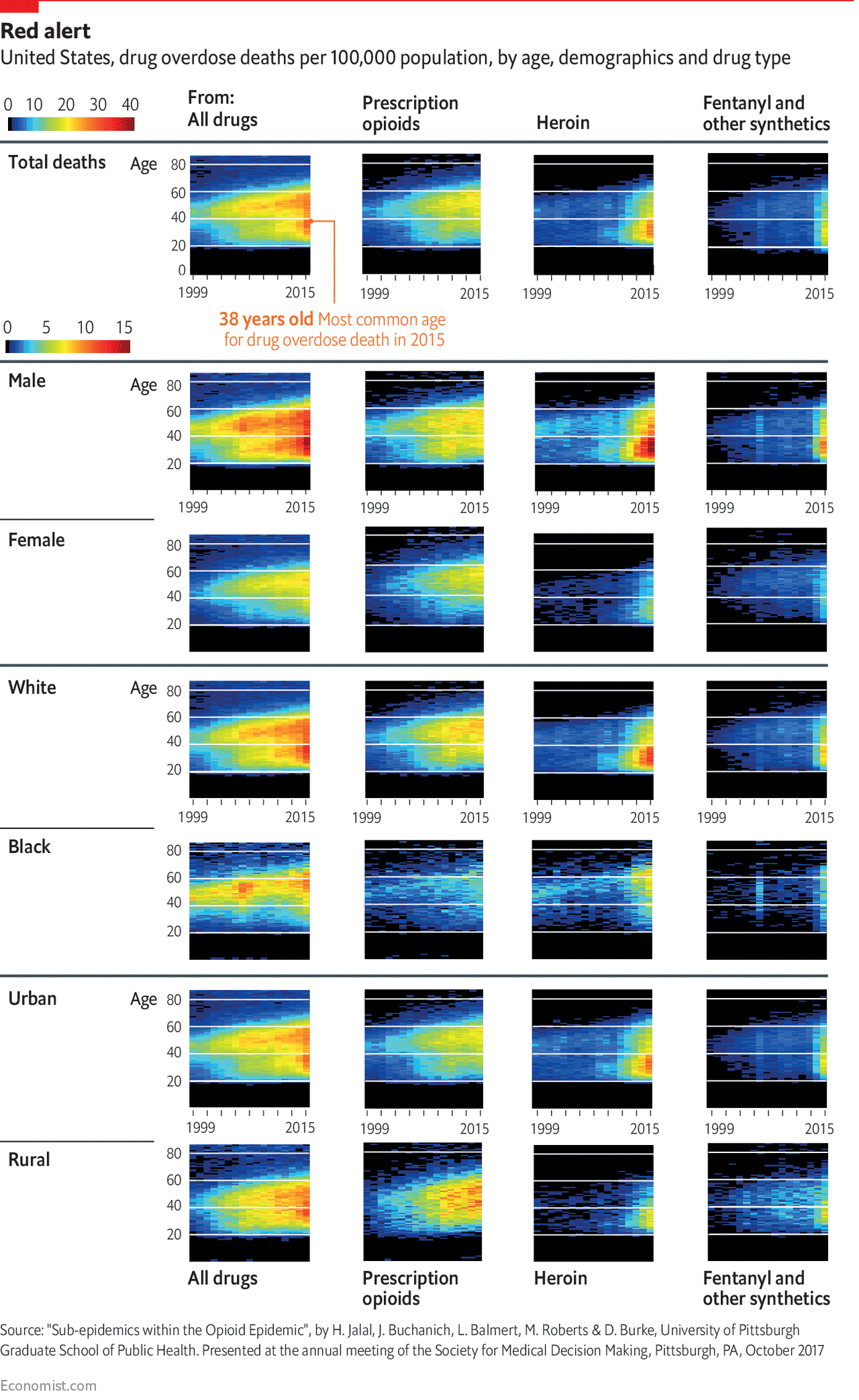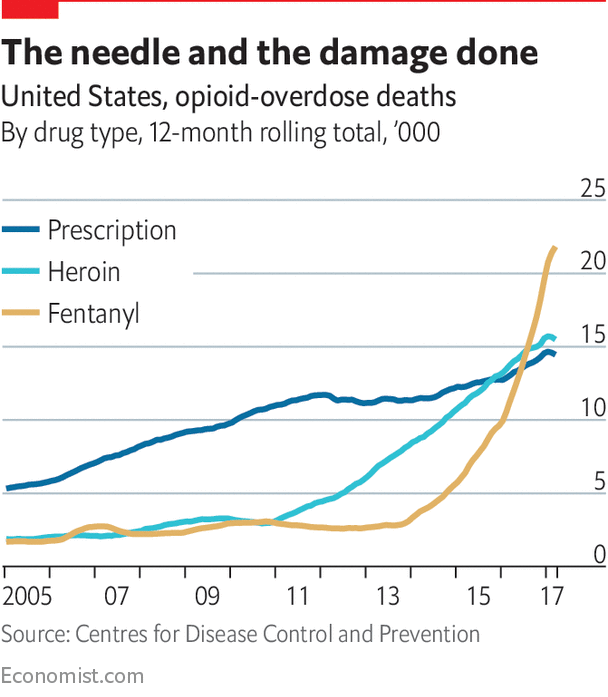
Oct 26th 2017
by THE DATA TEAM
EVERY 25 minutes an American baby is born addicted to opioids. The scale of both use and abuse of the drugs in the United States is hard to overstate: in 2015, the most recent year for which figures are available, an estimated 38% of adults took prescription opioids. Of those, one in eight (11.5m people in total) misused their prescription. Around 1m Americans overdosed last year, and 64,000 of them died.by THE DATA TEAM
The scourge of opioid abuse gained political salience last year, as voters in parts of the country with high levels of drug overdoses swung strongly towards Donald Trump. The president has taken few steps to combat the opioid crisis since taking office, but on October 26th he is expected to direct his secretary of health and human services to declare a public-health emergency. His national drug commission is due to publish a report on November 1st recommending a mix of rehabilitation, awareness-building and policing as the best response the epidemic.
Latest updates
- The shifting toll of America’s drug epidemic
GRAPHIC DETAIL4 HOURS AGO - Independents stampede into Mexico’s presidential election
AMERICAS4 HOURS AGO - The European Central Bank starts its exit from quantitative easing
BUSINESS AND FINANCE5 HOURS AGO - India’s new aviation policies are breathing life into a once-ailing sector
GULLIVER8 HOURS AGO - The first data from a repository of living human brain cells
SCIENCE AND TECHNOLOGY11 HOURS AGO - Retail sales, producer prices, wages and exchange rates
11 HOURS AGO
The number of deaths from prescription opioids has continued to rise, from around 11,000 in 2013 to 15,000 a year now (see chart, below). But the rate of growth has slowed, and many forecasters predict it may be nearing its peak. By contrast, the toll from fentanyl, a synthetic opioid 50 times stronger than heroin, is soaring. After claiming just 3,000 lives in 2013, it killed 22,000 people in America last year, more than either heroin or prescription opioids. Deaths from heroin have become far more frequent as well: after being roughly a quarter as common as fatal prescription overdoses in the mid-2000s, they overtook deaths from prescription opioids in 2015.

Similarly, most media attention has focused on substance abuse in states Mr Trump won, such as West Virginia, Kentucky and Ohio. But blue states like Maryland, Delaware and Massachusetts also figure among the current top ten for deaths from drug overdoses (see interactive chart below). That means Mr Trump will need to extend the government’s efforts far beyond his electoral base if he hopes to address the opioid epidemic.
NextCongestion in London is driving people off the buses
You’ve seen the news, now discover the story
Get incisive analysis on the issues that matter. Whether you read each issue cover to cover, listen to the audio edition, or scan the headlines on your phone, time with The Economistis always well spent.
Enjoy 12 weeks’ access for $12
Get incisive analysis on the issues that matter. Whether you read each issue cover to cover, listen to the audio edition, or scan the headlines on your phone, time with The Economistis always well spent.
Enjoy 12 weeks’ access for $12

View comments
Reuse this content


